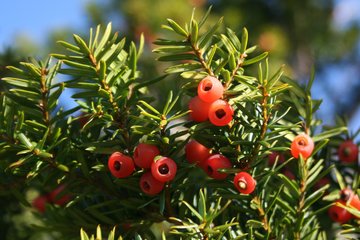Plants fight back
A kiwellin protein disarms the metabolic activity of a fungal effector
Plants are under constant attack by pathogens. To protect themselves, plants produce an array of defense proteins. Kiwellins are a family of secreted plant proteins that are common in many plant species. However, their biological functions remain largely unknown. An exception is Kwl1 from kiwi fruit, which acts as a human allergen. Scientists at the Max Planck Institute for Terrestrial Microbiology and collaborators at the LOEWE Center for Synthetic Microbiology in Marburg and the Philipps-Universität Marburg have described a biological function to a plant kiwellin for the first time. They detected a maize kiwellin that specifically inhibits the chorismate mutase activity of the U. maydis effector Cmu1. This finding highlights that kiwellins contribute to plant defense against a fungal pathogen.

The smut fungus Ustilago maydis secretes a cocktail of effector proteins to suppress plant defense responses and to reprogram maize to facilitate disease development. In infected tissue, the secreted chorismate mutase effector Cmu1 of U. maydis lowers levels of the plant defense hormone salicylic acid via its chorismate mutase activity.
The research group of Regine Kahmann at the Max Planck Institute for Terrestrial Microbiology together with the research groups of Gert Bange from Synmikro and Stefan Rensing from the Faculty of Biology of the Philipps-Universität Marburg solved the crystal structure of Cmu1, which reveals a distinct structural fold in the putative allosteric site and explains why Cmu1 has lost allosteric regulation by tryptophan and tyrosine. Co-immunoprecipitation followed by mass spectrometry analysis identified a maize kiwellin (ZmKwl1) that specifically interacts with Cmu1.
Among 20 kiwellin paralogs in maize, only the ZmKwl1 encoding gene is strongly transcriptionally induced upon U. maydis infection. Maize plants in which ZmKwl1 is silenced show increased susceptibility to U. maydis infection, indicating that ZmKwl1 contributes to maize defense against U. maydis.
This shows for the first time that kiwellins are components of the plant defense system against microbial pathogens. The structure of the Cmu1/ZmKwl1 complex reveals that two monomers of ZmKwl1 bind in a highly symmetric fashion to one Cmu1 homodimer. Interestingly, the two ZmKwl1 molecules localize in close proximity to the two active sites present within the Cmu1 homodimer, and likely block substrate access to the active site of Cmu1.
In vitro studies show that ZmKwl1 strongly inhibits the chorismate mutase activity of Cmu1. ZmKwl1 contacts Cmu1 at four distinct sites. However, these regions are highly variable among different kiwellin proteins, suggesting that other maize kiwellins might possess the capacity to target different effectors.












